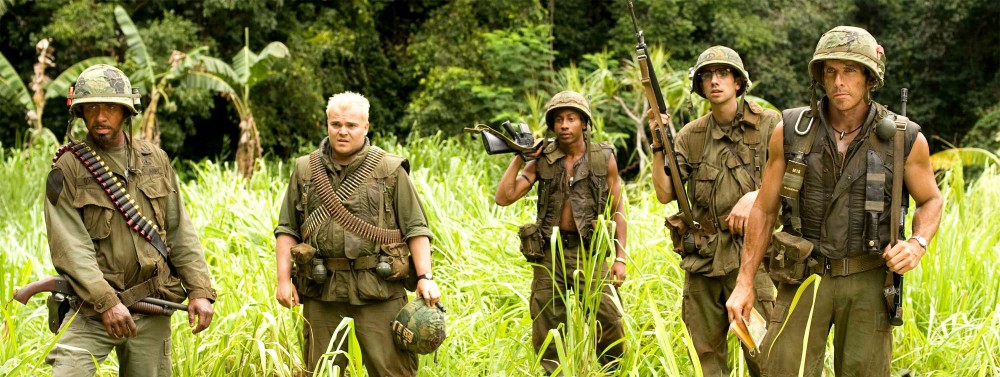Jessica Engle
The Watermelon Woman like the other movies that we have watched this year, is about a film within a film. We are watching a movie about the life of Cheryl Dunye and her life and how she is making this documentary, as well as watching this documentary about “The Watermelon Woman.” There are pretty much two story lines happening simultaneously throughout the film and we as the audience have to keep them straight. The way in which Cheryl, the director chose to use cinematography and sound in the movie helped to keep the two story lines separate while still smoothly weaving them together into one movie.
As we are watching the film there are two obvious different camera views that we are seeing. One is a home video looking camera lens that isn’t as clear as the other camera view; the other view is more of a standard camera lens. When we as the audience are looking at the movie through this home video looking camera that’s when we are in Cheryl’s camera. We are looking directly at what she is filming. This is when we are watching the documentary that she is working on in the movie. We know when we see things through this lens that the focus is going to be on “The Watermelon Woman” and uncovering her secrets. On the other hand when it is the standard camera lens and it is sharper and clearer, we are following the actual life of Cheryl. We are focusing on her work life, her friends, and her love life. It is almost like we are now watching the behind the scenes aspect of the documentary that she is working on. By changing the camera lens like this it enhances the audiences perception of what the audience should be expecting and focusing on in this scene.
Not only did the cinematography change but also the sound changed in the difference scenes. When it was the home video lens focusing on “The Watermelon Woman” a lot of the times the dialogue came from outside of the view of the camera. Much of the dialogue happened off screen. We as an audience knew that it was diegetic sound and the characters on screen could hear them, but we as the audience cannot see them. However in the case of the normal camera lens where the focus is on Cheryl’s life outside of the documentary all of the dialogue takes place on screen. The audience can always see who is speaking and it is always taking place on the screen. In this way the sound also enhances the audiences realization of what this scene is focusing on. We know that when there is dialogue taking place that we can’t see then we know we are looking through Cheryl’s camera and we are watching the film she is taking through her camera for the documentary of “The Watermelon Woman.”
The director’s choice of making it obvious when the story plot is changing from focusing on Cheryl’s life to focusing on “The Watermelon Woman” makes it easier for the audience to adjust. Sometimes two stories within one film can get a little sloppy and a little confusing. However, in this film changing the camera and sound makes it obvious when the story line is changing its focus. I really like this technique because it made it easy to follow the two inter-weaving stories within one film.

Thanks Jessica – interesting observations about the way that Dunye marks the distinction between the two stories with her cinematography and sound design. Aside from helping us to follow the interweaving stories, I wonder how the differences you observe influence our interpretation of the film’s meaning. In a way, it seemed like the scenes about Cheryl’s search for Fae Richards were more “real” than the scenes from her own life . . . but I’m not 100 percent sure why I felt that way, or what it says about the film’s message.
Also, I wonder if there are places in the film where the lines between “documentary” style and the “Cheryl’s real life” style get blurred?
I agree that the director used the Watermelon woman as a decoy from the real story at hand, which was the love story between Diana and Cheryl. Even for the mid 1990’s, the idea of a lesbian love story being the primary plot to a film was still a head of it’s time. Even now, all of the famous gay love stories are between two male lovers. The lesbian lovers are usually used as a method of sexualizing women rather than exploring their lives.
Very great post.
I just stumbled upon your blog and wanted to say that I have truly loved browsing your blog posts.
In any case I will be subscribing on your feed and I hope you write again very soon!
Feel free to visit my website ✅
온라인 카지노 게임
스포츠 토토 일정
토토 라이브 스코어
온라인 카지노 사이트
안전 카지노 사이트
https://www.j9korea.com
Thank you so much for the wonderful information. I am very impressed with your knowledge about this topic. Your blog post has made me think more deeply about the subject and I am now inspired to research more about it. I am sure the readers of your blog have found it very useful. I am thankful for the time and effort you have taken to create this content and share it with us.
https://nari.cafe/c/humor
thank you,intresting
Miami Hurricanes Jerseys